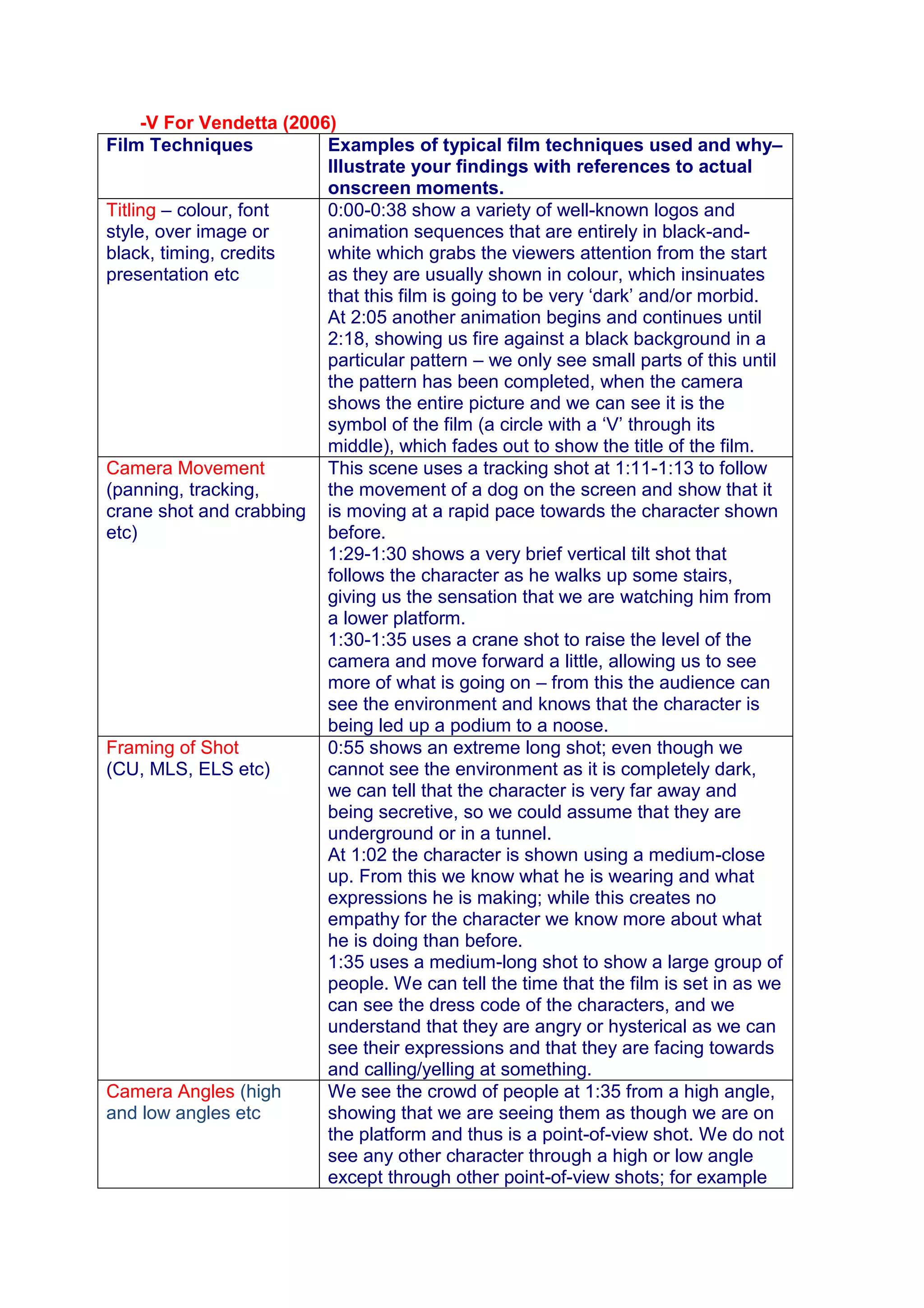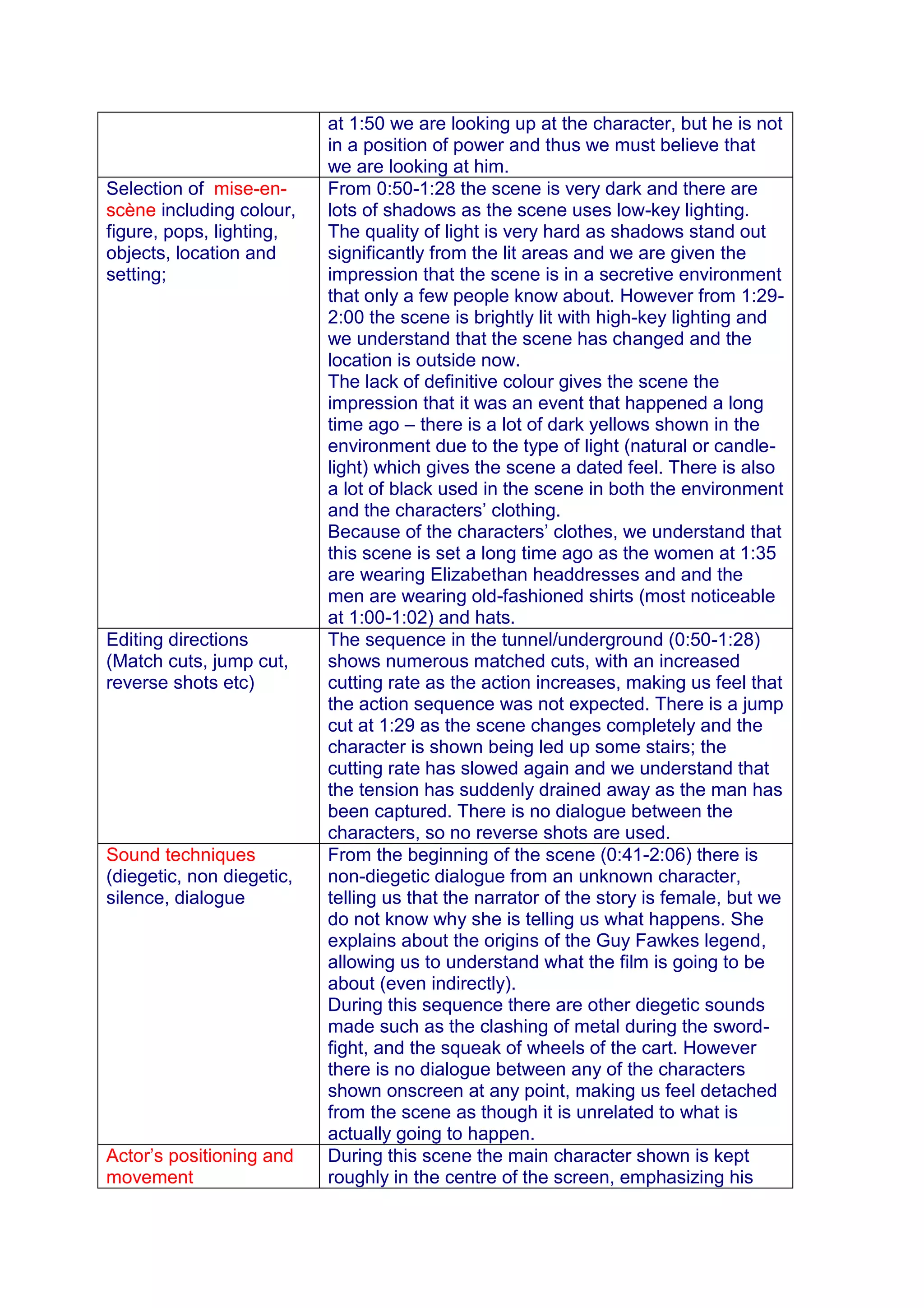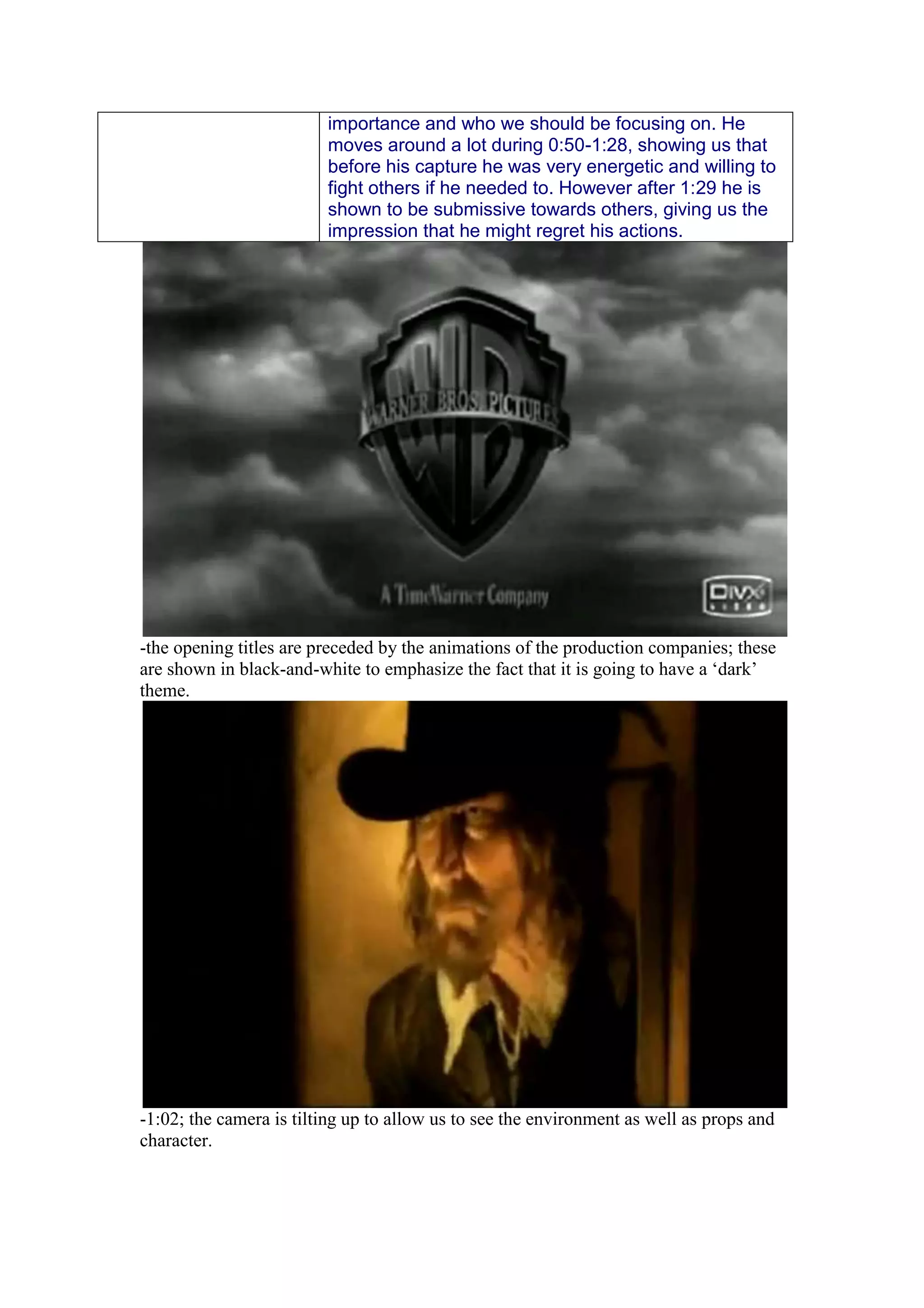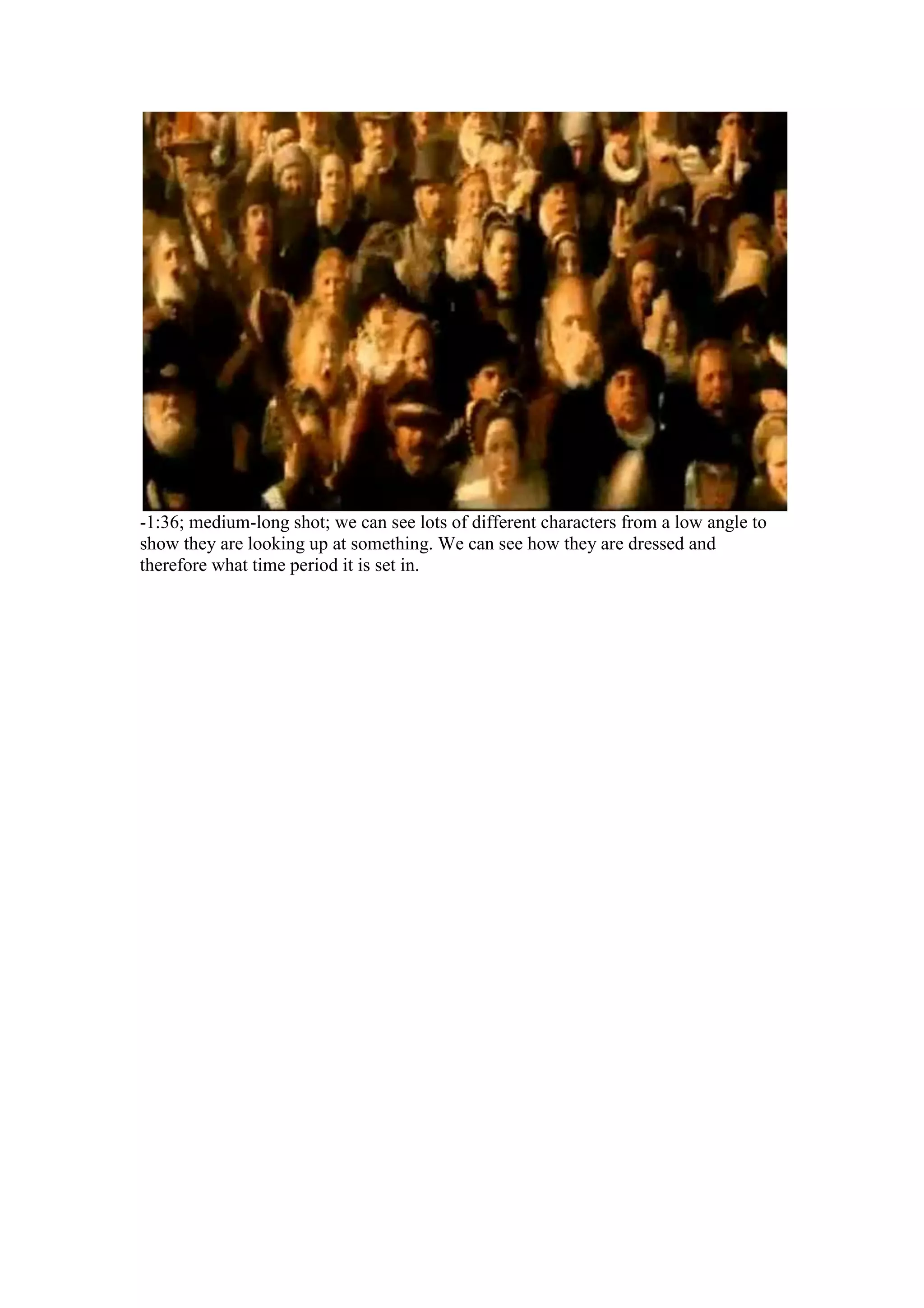The document analyzes film techniques used in the opening scene of V For Vendetta, including:
- The opening titles and production logos are in black-and-white to signal a dark theme.
- Camera movements like panning and tilting are used to follow characters and reveal the environment.
- Shots like medium close-up and medium long shot frame characters to show expressions, costumes, and the crowd.
- Lighting changes from low-key underground to high-key outside to indicate a change in location.
- Costumes and props provide context of the historical time period of the late 1600s.
- Edited sequences use matched cuts during action and a jump cut when the scene



